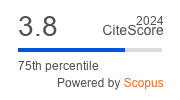Article | Open Access
The Lifestyles of Space Standards: Concepts and Design Problems
| Views: | 2083 | | | Downloads: | 1315 |
Abstract: Space standards are envisioned as a powerful means to regulate dwelling design, ensuring the quality, functionality, and safety of homes. Their ultimate objective is to guarantee a minimum level of design quality that can accommodate a wide range of domestic activities. While space standards primarily focus on isolated quantitative aspects such as overall size, room dimensions, and occupancy limits, they also make assumptions about activities to be performed by ideal “users” and specific lifestyles to be accommodated within a home. However, these assumptions are being challenged by the increasing demands and diverse activities taking place in the dwelling realm, which call into question the validity of existing space standards. In response to these challenges, this article conducts a critical review of the theoretical basis and various interpretations of space standards, particularly in the context of England. It explores their fundamental concepts and historical approaches, as well as examines specific examples of their application and their correlation with design strategies. By delving into the concepts of “the normal” and “the minimum dwelling,” the article discusses the three main dimensions of space standards: program, user, and size. Consequently, it argues for a more comprehensive understanding of the general application of space standards, which requires incorporating architectural design problems, particularly from the perspective of flexibility. This approach takes into account the evolving needs and diversity of households, as well as the creation of inclusive and adaptable living spaces.
Keywords: dwelling design; flexible housing; housing design quality; minimum dwelling; space standards
Published:
© Alvaro Arancibia. This is an open access article distributed under the terms of the Creative Commons Attribution 4.0 license (http://creativecommons.org/licenses/by/4.0), which permits any use, distribution, and reproduction of the work without further permission provided the original author(s) and source are credited.


